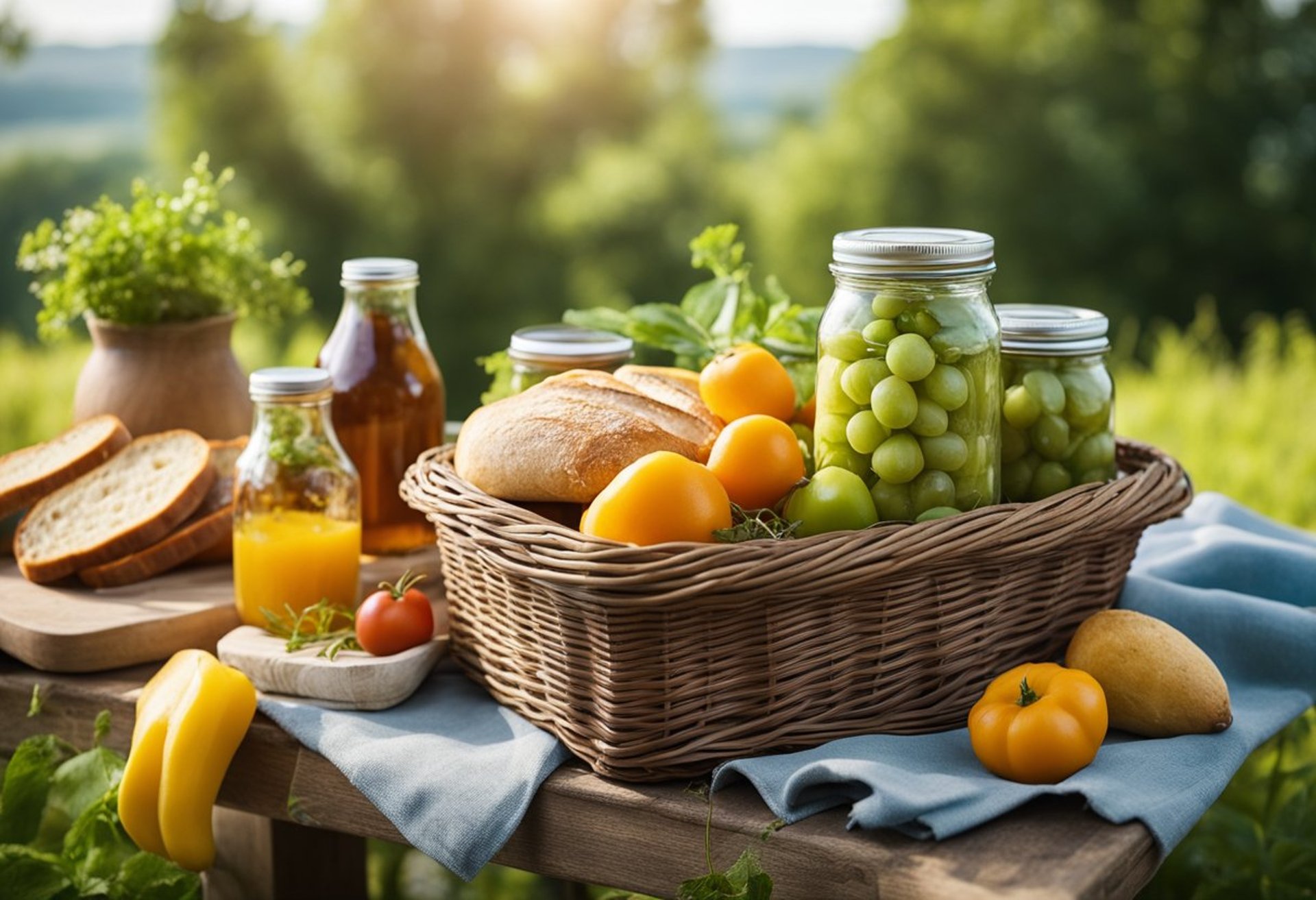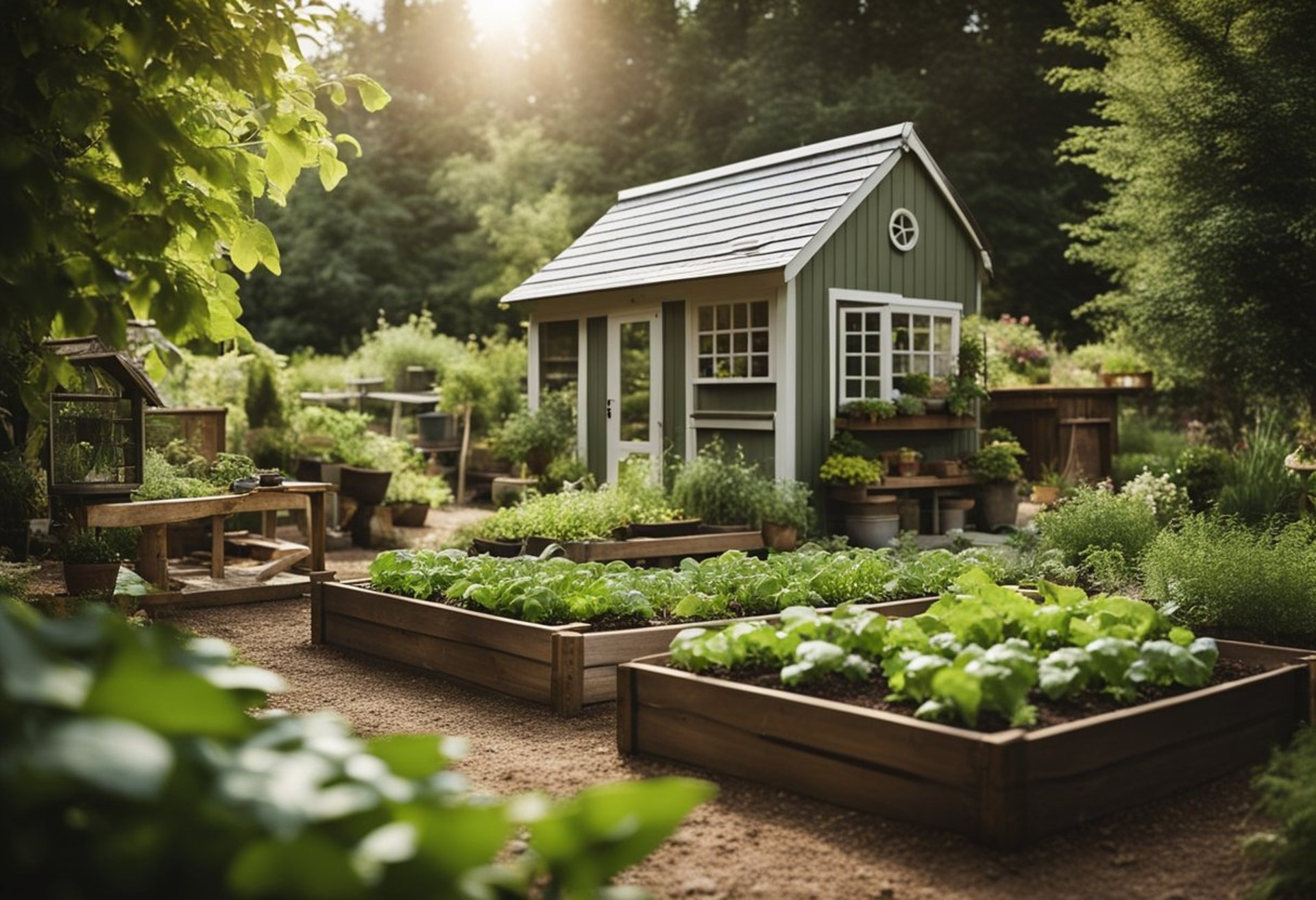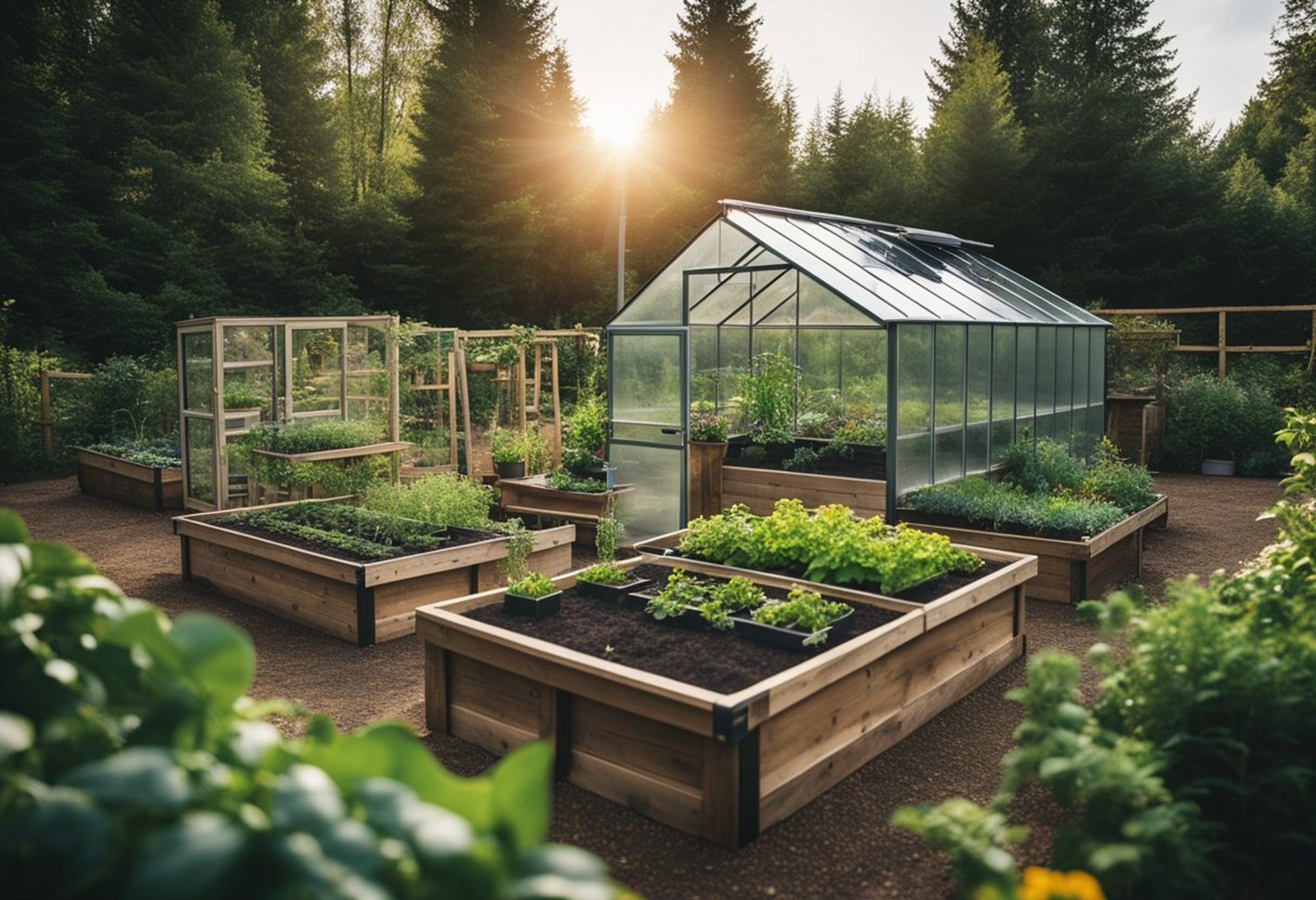Off the Grid Food: Sourcing and Preparing for Sustainable Living
The concept of off-grid food involves sourcing and preparing meals without reliance on conventional supermarkets. This lifestyle fosters independence by utilizing homegrown produce, foraged ingredients, and sustainable practices. Those interested in minimizing their ecological footprint or simply seeking a more self-sufficient way of living may find this approach appealing.
Off the Grid Food: Sourcing and Preparing for Sustainable Living
The concept of off-grid food involves sourcing and preparing meals without reliance on conventional supermarkets. This lifestyle fosters independence by utilizing homegrown produce, foraged ingredients, and sustainable practices. Those interested in minimizing their ecological footprint or simply seeking a more self-sufficient way of living may find this approach appealing.
Exploring off-grid food opens up avenues for creativity in meal planning and preparation. With various techniques for gardening, food preservation, and even community support, individuals can thrive away from typical commercial food systems. Readers will discover how to cultivate a thriving food ecosystem that aligns with off-grid principles.
Key Takeaways
Off-grid food emphasizes self-sufficiency in sourcing and preparing meals.
Sustainable practices enhance food security and environmental responsibility.
Community support plays a crucial role in successful off-grid living.
Understanding Off-Grid Living
Off-grid living emphasizes self-sufficiency and independence, focusing on how individuals can thrive without reliance on public utilities. This lifestyle significantly influences food production, sustainability, and preservation methods.
Defining Off-the-Grid
Off-the-grid living refers to a lifestyle where individuals or communities operate independently from centralized services, like electricity and water. This often means utilizing renewable energy sources, such as solar or wind power. Off-grid residents typically cultivate their own food, provide their own water, and may even create their own waste management systems. The core of this lifestyle is resilience and sustainability, encouraging a return to traditional skills and techniques for everyday living.
Advantages of Off-Grid Food Sustainability
Off-grid food systems offer several benefits. First, there is a reduced carbon footprint associated with local food production. Growing one’s food minimizes transportation emissions and supports local biodiversity. It also allows for control over food quality, including the choice to avoid pesticides and genetically modified organisms (GMOs). Off-grid living promotes food security by relying on homegrown produce, which can be crucial during supply chain disruptions. Additionally, skills developed in gardening and preserving food foster a sense of community and self-reliance.
Challenges of Food Production and Preservation Off the Grid
Despite its advantages, off-grid food production presents challenges. Weather conditions significantly influence crop success, as unpredictable climates can lead to food shortages. Limited access to commercial agricultural supplies may hinder the ability to grow certain foods or maintain soil quality. Preservation methods, like canning or dehydration, depend on adequate storage, which can be difficult without refrigeration. Additionally, securing enough food to last through seasons requires careful planning and hard work, often extending beyond simple planting and harvesting. Adaptability and continuous learning are essential for overcoming these hurdles in off-grid living.
Planning Your Off-Grid Garden
Creating an off-grid garden requires careful thought and planning. Key aspects include selecting the right crops, designing an efficient layout, and accounting for seasonal changes. This preparation can lead to a more productive and sustainable garden.
Selecting Your Crops
Choosing the right crops is essential for an off-grid garden. Consider factors such as climate, soil type, and available space. Vegetables like potatoes, carrots, and beans often thrive with minimal care and yield a high nutritional value.
Opt for heirloom varieties to ensure they are well-suited to local conditions. Additionally, incorporating perennial crops, such as berries and fruit trees, offers long-term harvests with less upkeep. Create a list of preferred crops, highlighting those that can be stored or preserved for future use.
Garden Layout and Design
The garden layout significantly impacts productivity and ease of maintenance. Design beds in a way that maximizes sunlight exposure and water efficiency. Raised beds can improve drainage and accessibility, while companion planting can enhance crop health and pest control.
Incorporate pathways for easy access and maintenance. A grid system, where crops are organized in rows, allows for efficient planting and harvesting. Utilizing mulch can help retain moisture, reduce weeds, and improve soil health, all critical for sustaining an off-grid approach.
Seasonal Considerations
Understanding seasonal changes is crucial in off-grid gardening. Planting schedules should align with local frost dates and growing seasons. Early spring is ideal for cool-weather crops, while warm-weather crops thrive in late spring to summer.
Heirloom varieties and native plants should be prioritized, as they adapt well to local conditions. It's also important to implement crop rotation strategies to maintain soil fertility. Preparing for seasonal challenges, like drought or heavy rain, helps ensure a successful harvest throughout the year.
Off-Grid Food Production Techniques
Effective off-grid food production relies on sustainable practices that maximize resource efficiency. Various techniques such as permaculture, aquaponics, hydroponics, and raising livestock can provide a reliable food source while minimizing environmental impact.
Permaculture Practices
Permaculture focuses on designing agricultural ecosystems that mimic natural ecosystems. It emphasizes biodiversity, soil health, and water management. Implementing a permaculture system involves:
Zoning: Organizing elements based on their frequency of use and care requirements.
Plant Guilds: Creating companion planting strategies that enhance growth and deter pests.
Water Management: Utilizing swales and rainwater harvesting to maximize water efficiency.
These practices promote resilience in food production by establishing a self-sustaining environment. For instance, integrating nitrogen-fixing plants improves soil fertility naturally, reducing the need for synthetic fertilizers.
Aquaponics and Hydroponics
Aquaponics combines aquaculture (raising fish) with hydroponics (growing plants without soil). This method creates a closed-loop ecosystem where fish waste provides nutrients for plants, and plants filter water for fish. Key components include:
Fish Species: Tilapia and catfish are popular due to their hardiness and quick growth.
Plant Selection: Leafy greens like lettuce and herbs thrive in aquaponic systems.
System Types: Nutrient film technique (NFT) and deep water culture (DWC) are common setups.
These systems allow for year-round food production, even in limited space. The nutrient cycling process reduces water usage significantly, making it an efficient method for off-grid living.
Livestock and Perennial Plants
Integrating livestock into off-grid food production enhances sustainability and productivity. Chickens, goats, and rabbits provide not only meat and eggs but also manure for fertilization. Advantages include:
Manure for Fertility: Animal waste enriches soil, improving crop yields.
Eggs and Milk: Animals supply consistent protein sources.
Natural Pest Control: Certain livestock can help manage pests organically.
Perennial plants, unlike annuals, grow back year after year, reducing planting labor. Examples include asparagus, berries, and fruit trees. These plants build soil and increase biodiversity, contributing to a more resilient ecosystem.
Food Preservation and Storage
Effective food preservation and storage are essential for ensuring a sustainable food supply when living off the grid. Various methods contribute to longer shelf life and reduced waste, allowing individuals to maximize their resources.
Canning and Dehydration
Canning is a popular method for preserving a variety of foods. It typically involves cooking food, sealing it in jars, and then heating it to destroy bacteria. Common foods for canning include fruits, vegetables, and meats. It's vital to use proper techniques and follow guidelines from reliable sources to ensure safety.
Dehydration is another effective preservation technique. Removing moisture from foods prevents the growth of bacteria and mold. Fruits, vegetables, and herbs are often dehydrated for long-term storage. Using a food dehydrator or an oven can achieve this. Storing dehydrated foods in airtight containers in a cool, dark place helps maintain quality.
Root Cellaring
Root cellaring is a traditional technique that uses temperature and humidity control to store fruits and vegetables. This method relies on creating a cool, dark environment that slows spoilage.
Common root cellar crops include potatoes, carrots, and onions. Building a root cellar can be as simple as using a basement or a dedicated outdoor structure. Proper ventilation and insulation are key to maintaining the right conditions.
Using Renewable Energy for Refrigeration
Sustainable refrigeration options are crucial for keeping perishables fresh off the grid. Various renewable energy sources, such as solar panels or wind turbines, can power a small fridge or a cooler designed for off-grid use.
These systems can help maintain consistent temperatures, enhancing long-term food storage. Gardeners and foragers benefit from using off the grid fridges to preserve seasonal harvests. Using thermal storage techniques, like ice blocks, in combination with renewable energy can optimize efficiency and extend food shelf life.
Innovations in Off-Grid Food Solutions
Recent advancements in technology have empowered individuals to access food sustainably while living off the grid. These innovations enhance food preparation, cooking, and preserving capabilities without relying on traditional utilities.
Solar-Powered Appliances
Solar-powered appliances have transformed cooking and food storage for off-grid living. Solar ovens and cookers harness energy from the sun to prepare meals without using fossil fuels. These devices can reach temperatures suitable for baking, roasting, and boiling.
In addition to cooking, solar refrigerators and freezers provide energy-efficient ways to preserve food. Utilizing photovoltaic panels, these appliances maintain optimal temperatures for perishable items. This enables individuals to store fresh produce and meat, reducing waste and improving food security in remote areas.
Biogas for Cooking and Heating
Biogas technology offers an effective solution for cooking and heating off-grid spaces. Anaerobic digesters convert organic waste, such as kitchen scraps and animal manure, into biogas. This gas can be utilized for cooking purposes, providing a renewable energy source.
Implementing biogas systems not only reduces reliance on external fuel sources but also minimizes waste. It creates a closed-loop system where waste is turned into energy, fostering sustainability. This practice is particularly beneficial for rural communities, where organic waste is abundant.
Off-Grid Water Collection and Purification
Water is a vital resource for food preparation and hygiene. Off-grid innovations in water collection and purification enhance this essential aspect of sustainable living. Rainwater harvesting systems collect and store rainwater for household use, including cooking.
Purification methods, such as UV filters and gravity-fed systems, ensure that collected water is safe for consumption. These technologies eliminate harmful bacteria and contaminants, making water readily available for cooking and hygiene. They support off-grid living by minimizing the need for external water sources and promoting self-sufficiency.
Practical Off-Grid Food Ideas
A variety of practical ideas enable individuals to thrive while living off the grid. Simple recipes, thoughtful meal planning, and foraging techniques play a crucial role in sustenance.
Simple and Nutritious Recipes
Focus on recipes that use staple ingredients to create fulfilling meals. Canned beans, dried grains, and root vegetables serve as great bases.
Bean Chili: Combine canned beans, tomatoes, and spices for a hearty meal.
Quinoa Salad: Mix quinoa with chopped vegetables and a light dressing for refreshing nutrition.
These meals require minimal cooking resources and can utilize a solar cooker or camp stove effectively.
Meal Planning and Shopping Lists
Effective meal planning streamlines shopping and reduces waste. A checklist helps prioritize essential items, ensuring access to nutritious foods.
Staples: Include grains, legumes, and canned goods.
Produce: Choose vegetables with a longer shelf life such as potatoes and carrots.
Prepare meals that can be made in bulk, serving multiple days. Soups and stews are ideal, as they store well and are easy to reheat.
Foraging and Wild Harvesting
Foraging offers opportunities to gather wild edibles, enhancing off-grid diets. Knowledge of local flora is essential.
Edible Plants: Dandelion greens, wild garlic, and berries can be nutritious additions.
Fungi: Identify safe mushrooms for various dishes.
Creating a foraging guide can assist in recognizing safe options. This not only diversifies meals but also strengthens the connection to the surrounding environment.
Community and Networking
Building connections within off-the-grid food communities can enhance the experience and efficiency of sustainable living. Engaging with local groups and resources helps individuals share knowledge, resources, and support in their endeavors.
Local Off-Grid Communities
Local off-grid communities offer vital networks for individuals seeking to grow their own food sustainably. These communities often share common goals such as self-sufficiency and environmental stewardship.
Members typically organize regular meetups and gatherings. Activities might include collaborative gardening, farm tours, and skill-sharing workshops.
Through these interactions, members can exchange tips on crop rotation, pest management, and preserving techniques. Such shared experiences foster a sense of belonging and collective resilience in the face of challenges.
Cooperative Food Sharing Initiatives
Cooperative food-sharing initiatives play a significant role in enhancing access to fresh produce. These programs allow individuals to pool resources and share food, reducing waste and costs.
Examples of initiatives include Community Supported Agriculture (CSA) programs. In these programs, members pay upfront for a share of the harvest. Typically, local farmers grow the produce, ensuring freshness.
Additionally, food co-ops enable members to purchase in bulk, which can lead to significant savings. Individuals engage in bartering systems, exchanging surplus crops or homemade goods, thus maximizing community benefits.
Educational Resources and Workshops
Educational resources and workshops strengthen knowledge within off-grid food communities. Many organizations provide training on topics such as permaculture, organic farming, and preservation methods.
Workshops often feature hands-on experiences, allowing participants to learn by doing. Topics may include seed saving, fermentation, and canning.
Local libraries and community centers frequently host classes and lectures led by experienced practitioners. Accessing these resources empowers individuals to improve their skills and contribute effectively to their community's food system.







